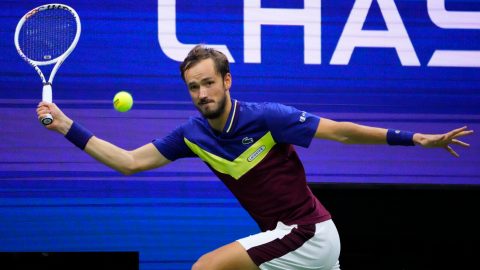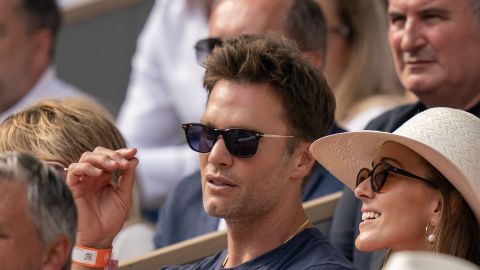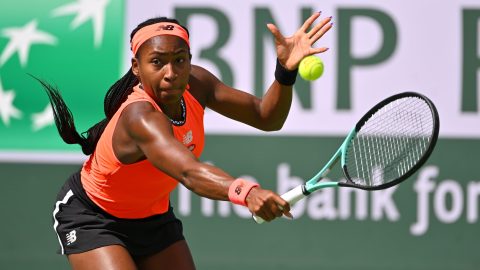Rafael Nadal‘s biggest French Open victories seem to come in a certain rhythm. In 2006 and 2007, Roger Federer won Wimbledon, then the U.S. Open, then the Australian Open. But Nadal took the French. This year, it was world No. 1 Novak Djokovic who took Wimbledon, the U.S. Open and the Australian Open. But it was Nadal again who came through on clay — a record seventh title at Roland Garros.
The win wasn’t just another sign that Nadal owns the clay courts. Who he beat was just as important as where he was beating them.
Nadal, whose career was once defined by his ability to take down Federer, is now firmly in the second half of his career, where his success is judged more by whether he can beat Djokovic. In between the two great rivalries that will bookend his career, though, Nadal has built quite a record of his own. And it’s not all on clay.
Nadal has now won 11 Grand Slam titles, dating back to 2005. Seven of those majors were the French Open (he’s won it the past eight years except 2009, when fighting injury, and is 52-1 overall), but he’s also taken Wimbledon twice and the Australian and U.S. Opens once. In a remarkable 2010, he won every title except the Australian.
The lefty has come a long way from the player who was once quick and scrappy on clay but struggled when playing on faster surfaces. As well as diversifying his Grand Slam portfolio (all of his non-French Open majors have come since 2009), Nadal has also been resilient in the regular season. He logs more than 60 wins a year, going well beyond the clay portion that he dominates. This past year, when Djokovic won 43 matches in a row and worked to a 70-6 record in what some were calling the best season ever, Nadal was the runner-up in Djokovic’s three Slam wins.
Nadal may forever be defined by how he stacked up against Federer and Djokovic. But his record both against the two rivals and on his own should send him into the best-ever discussion with more than a good left hook.
First, Nadal is already among the greats in his number of Grand Slam titles. His 11 slams are tied with Rod Laver and trail only Pete Sampras (14) and Federer (16).
As little as two years ago, Federer was making hard charges in majors, and he battled to the French Open semifinal this year. But the majestic Federer is slowing down at 30. Even if he wills his way past the age at which most other players bow out, it’s fair to wonder whether he can gather enough resources for a Slam run or two past Djokovic and Nadal.
Nadal, on the other hand, is still a sprightly 26. He’s been ahead of Federer’s title pace, having won the French at age 19, several years before the rest of his game clicked (Federer immediately dominated when he started winning but didn’t get his first title until 2003, at 22). Even if Nadal just collects French Open titles until his legs fail him, he’s still got a good chance at the record.
The second reason Nadal can paint a case for best-ever at this point in his career is what he’s done against his rivals. It hasn’t just been in finals, where he’s pushed Djokovic and Federer the times he hasn’t defeated them. Nadal is a career 19-14 against Djokovic and 18-10 against Federer.
Federer and Djokovic aren’t only collecting the slam titles — they also rule the dozens of matches that fill the grind of regular-season tennis. The two have ripped through singles tournaments and held the No. 1 ranking, but when they face Nadal, they truly meet their match.
Nadal’s ability to foil two players who will go down as some of the best the sport has ever seen builds a strong case for Nadal’s own standing. If he ends up with more Slam titles, a better head-to-head record against Federer and Djokovic, and comparable stats on regular-season wins, why shouldn’t he be considered the greatest ever?
The two answers to that question both come from Nadal’s game: He’s built his title run on clay, and his way of winning is more about making the ball spin and grinding out matches than it is about pure tennis.
So, Nadal’s game isn’t as beautiful as Federer’s. He doesn’t hit the same jaw-droppers as Djokovic or have the same finesse points. Nadal’s game is built on stamina and persistence, not beauty and awe.
But Nadal wins. He uses the game he needs and beats players with incredible talent, and he makes the most of his best surface to do it. (If an argument can be made that Nadal’s title total is cheap because most were on clay, what can be said about other tennis players, who get two slams a year on hard courts? Why don’t they take similar advantage of that surface?)
The book is far from closed on the careers of Nadal, Djokovic and even Federer. But if Nadal continues to take down the rivals who reigned on the opposite ends of his career, and if he plays his hand well enough to gather more Slams, the obvious dominance of Djokovic and Federer may take on a different hue in the history books. They look unstoppable now, but there has been one player who has, indeed, stopped them.
When the final racquet is smashed, Nadal may be the man left standing.



